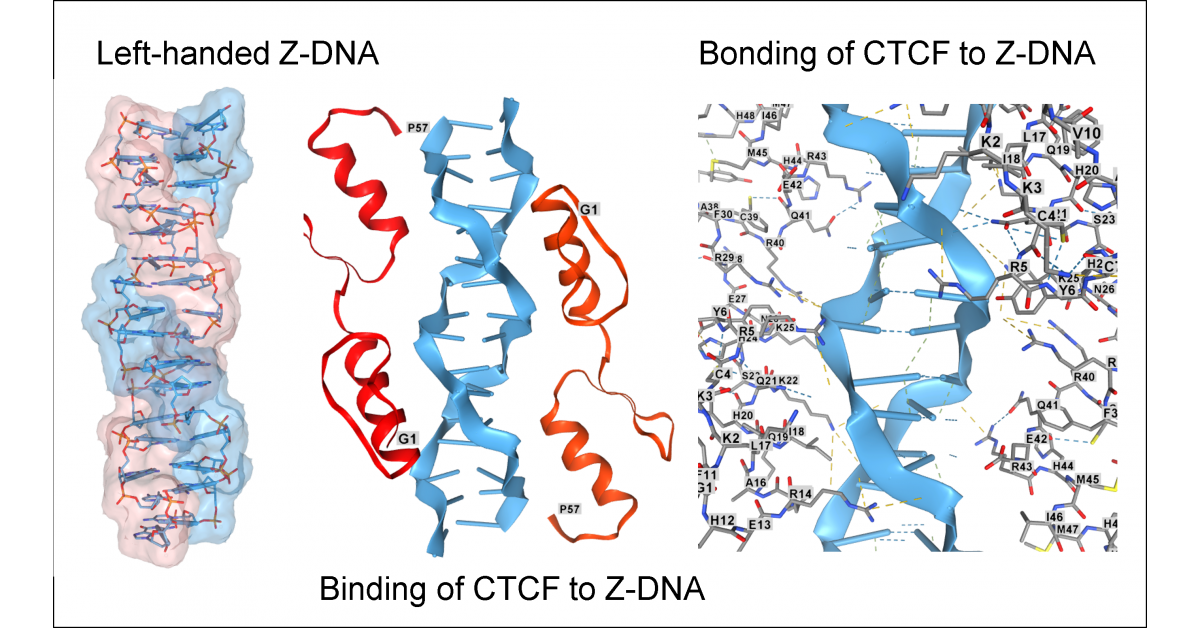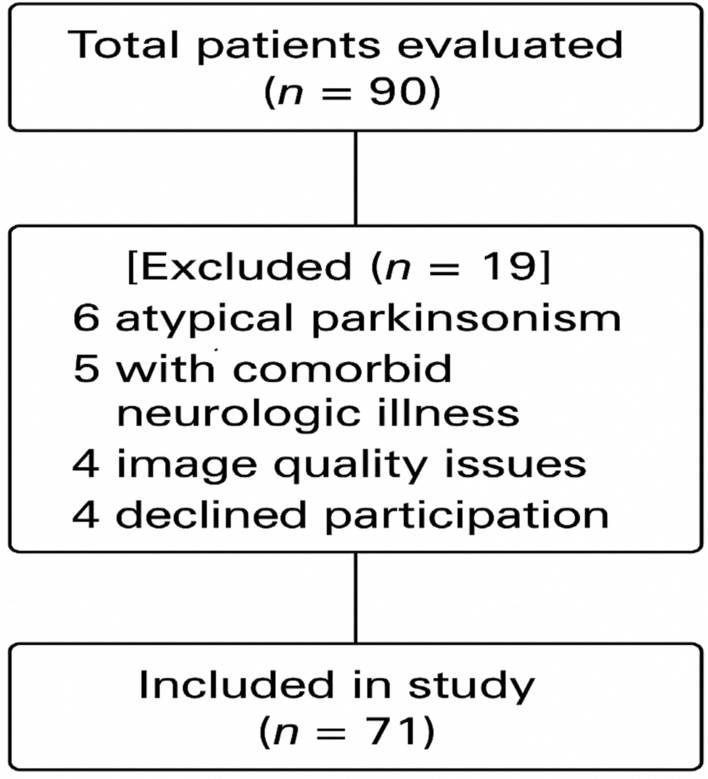Eleanor MaslinEast Yorkshire and Lincolnshire
 Family handout
Family handoutA mother is urging the government to “act immediately” to roll out spare allergy pens in schools after her…

Eleanor MaslinEast Yorkshire and Lincolnshire
 Family handout
Family handoutA mother is urging the government to “act immediately” to roll out spare allergy pens in schools after her…

The left-handed spiral of each Z-DNA strand is highlighted on the left. Binding and bonding of the two zinc finger domains (shown in red) from the CTCF protein to Z-DNA (shown in blue). This protein helps to bridge chromosomal segments in…

The Norwegian Group reported the strongest quarterly results in group history in the third quarter, with a profit before tax (EBT) of NOK 2,891 million an operating profit (EBIT) of NOK 3,071 million. The quarter was characterised by several important milestones, including the first-ever dividend, paid in August, and the exercise of a purchase option to acquire 30 additional new Boeing aircraft.
During the third quarter, the Norwegian Group recorded an operating profit (EBIT) of NOK 3,071 million. The operating margin was 25.1 percent. The liquidity position decreased to NOK 10.5 billion at the end of the quarter.
“We are very pleased to once again report a record quarter. In August, we paid our first-ever dividend of NOK 0.90 per share to approximately 75,000 shareholders. It has been a strong quarter overall, and I would like to thank all my colleagues in both Widerøe and Norwegian for their outstanding efforts during the busiest months of the year. Widerøe’s record-breaking passenger numbers also deserve recognition, which in September reached an all-time high in the company’s more than 90-year long history,” said Geir Karlsen, CEO of Norwegian.
In the third quarter, the Norwegian Group had 8.41 million passengers, of which 7.28 million were passengers of Norwegian and 1.12 million of Widerøe. The quarterly load factor for Norwegian was 88.3 percent, up 0.3 percentage points from last year, while Widerøe had a load factor of 77.5 percent, down 0.6 percentage points. Capacity increased 2 percent and 3 percent for Norwegian and Widerøe respectively. The quarter also held solid operational performance from both airlines. Widerøe stood out with 98.2 percent of scheduled flights taking place and a punctuality of 91.8 percent. Norwegian had a punctuality of 77.8 percent, up 3.6 percentage points from last year, and 99.3 percent of scheduled flights taking place.
Fleet renewal and Denmark on the rise
During the quarter, Norwegian expanded the existing Boeing order by exercising an option to purchase 30 additional Boeing 737 MAX 8 aircraft, increasing the total firm order to 80 aircraft.
“By exercising the Boeing purchase option, we maintain flexibility while reinforcing our commitment to operating one of Europe’s most modern and fuel-efficient fleets. This is an important step in our ongoing fleet renewal programme, and we are very pleased to further strengthen our long-term partnership with Boeing,” said Geir Karlsen.
October was an important month in Denmark, marked by several positive developments. The month began strongly with the announcement of ten new international routes from Billund airport. On the same day, Norwegian was named “Best European Airline” at the Danish Travel Awards. A few days later, Norwegian won the Danish government’s tender for a domestic route aimed at reducing climate impact. Under this agreement, 93 percent of Norwegian’s flights between Aalborg and Copenhagen will operate using at least 40 percent sustainable aviation fuel (SAF) from March next year. The project is expected to save approximately 6,700 tonnes of CO2 on a life-cycle basis.
Well prepared for the winter season
For the upcoming winter months, Norwegian has reduced the monthly capacity by between 25 to 40 percent, compared to the October capacity. This is to better align with demand during winter and optimise performance in the low season.
“We have an attractive route network in the winter season, well tailored to our customers’ needs. Booking trends are looking encouraging, and our customers are booking their flights further in advance this year compared to previous years. We have therefore sold more tickets this year, compared to the same time last year, with reduced capacity. This bodes well for a busy winter season with high load factors,” said Geir Karlsen.

DHAKA, Oct. 22 (Xinhua) — A total of 814 people were diagnosed with dengue fever in Bangladesh in the past 24 hours on Tuesday, said the Directorate General of Health Services (DGHS) under the Ministry of Health.
With the fresh infections…

Despite growing interest in neuroimaging biomarkers for idiopathic Parkinson’s disease (IPD), a critical gap persists in identifying accessible, non-invasive tools for early diagnosis and monitoring. We aimed to establish MRS as a practical, reproducible, and clinically applicable biomarker tool in IPD diagnosis and progression tracking. Proton magnetic resonance spectroscopy (MRS) can detect neurochemical alterations in vivo, yet most studies are limited by small cohorts, single-voxel methods, or high-field MRI dependence [11]. The novelty of our study lies in its use of multi-voxel MRS on a widely available 1.5 Tesla scanner in a relatively large cohort, with targeted assessment of the substantia nigra—a region often underrepresented due to technical challenges. By correlating metabolite ratios with detailed clinical severity scales.
Regarding sociodemographic characteristics, our study demonstrated no significant differences between patients and controls concerning age (61.45 ± 9.82 vs. 64.37 ± 10.61 years; p = 0.09) or sex distribution (77.5% vs. 71.8% male; p = 0.44). This is consistent with the previous epidemiological studies that reported similar demographic distributions in Parkinson’s disease cohorts, suggesting that age and sex matching were successful in avoiding confounding effects [12]. However, we found a significantly higher proportion of patients with occupational exposure to agricultural fields compared to controls (p = 0.001), supporting the hypothesis that environmental toxins may contribute to disease risk. This aligns with the findings of another study, which emphasized environmental and lifestyle influences on Parkinson’s disease, especially in rural populations. Thus, our study adds further evidence that environmental exposure should be considered in disease risk assessment, particularly in resource-limited regions [13].
Regarding radiological findings, our study revealed significant neurometabolic alterations in IPD patients compared to controls, with decreased NAA/Cr and NAA/Cho ratios and elevated Cho/Cr ratios across the caudate, lentiform nuclei, and substantia nigra. These findings are consistent with earlier reports that MRS can differentiate Parkinson’s patients from healthy individuals [13, 14]. For example, Shoeibi et al. [15] demonstrated similar metabolic alterations, particularly reduced NAA/Cr in the substantia nigra, reinforcing the value of spectroscopy as a biomarker of neuronal loss.
Additionally, Lucetti et al. [16] demonstrated cortical NAA/Cr reduction in newly diagnosed patients, which supports the notion that metabolic alterations occur early in disease, though they localized changes outside the basal ganglia due to technical artifacts. Taken together, our results confirm the reproducibility of MRS findings in IPD, while highlighting that methodological differences across studies can influence observed regional patterns.
Our findings also align with Amartumur et al. [3] and Das and Ramteke [4], who emphasized the role of metabolic stress, mitochondrial dysfunction, and neurodegeneration in IPD pathophysiology, processes that MRS captures indirectly through metabolite shifts. However, Marino et al. [17] reported no significant differences in NAA/Cr or NAA/Cho between IPD patients and controls in the lentiform nucleus, findings that contradict ours. This discrepancy may stem from their smaller sample size, differences in voxel placement, or technical limitations of 1.5 T acquisition. By contrast, our relatively larger cohort and multi-voxel approach provided stronger statistical power to detect subtle metabolic changes, particularly in the substantia nigra.
Regarding correlation with disease severity, in our study, NAA/Cr and NAA/Cho ratios correlated negatively and strongly with UPDRS scores and Hoehn and Yahr stage, while Cho/Cr ratios correlated positively with disease severity. For instance, left substantia nigra NAA/Cho showed a strong negative correlation (r = –0.823, p < 0.001), confirming that metabolite alterations mirror clinical disability. This is consistent with the previous findings. Marino et al. [17] observed negative correlations between NAA/Cr and UPDRS, although their results did not reach significance in smaller subgroups, emphasizing the need for larger cohorts such as ours.
Similarly, Cao et al. [18] also reported diminished substantia nigra NAA/Cr levels in drug-withdrawn PD patients, supporting its role as a progression marker. Our results diverge from some earlier reports. Another study found no differences in basal ganglia metabolite ratios in IPD, suggesting that MRS was more sensitive to atypical Parkinsonism (MSA, PSP). However, their patient numbers were limited and lacked detailed correlation with UPDRS subscales. By contrast, our study’s novelty lies in comprehensive correlation across all UPDRS domains, providing robust evidence that metabolite changes not only distinguish patients from controls but also quantify disease burden. Mazuel et al. [19] further showed that acute levodopa administration could modulate putaminal metabolites, suggesting that treatment status is a confounding factor, which we partially addressed but could not fully eliminate, given that only one of our patients was drug-naïve.
Regarding correlation with disease duration, most radiological markers in our study showed weak or no correlation with disease duration, except for right substantia nigra NAA/Cho, which correlated negatively (r = –0.304, p = 0.010). This suggests that metabolite decline may occur selectively in specific regions over time, independent of clinical staging. Similar results were reported by another study, which observed that while cross-sectional metabolite differences were limited, correlations with disease severity emerged in patients with longer disease duration. In contrast, Clarke and Lowry [14] emphasized that metabolite reduction was more apparent in atypical Parkinsonian syndromes, highlighting the complexity of disease progression markers. Our findings thus support the hypothesis that MRS can capture region-specific neurodegeneration over time, although longitudinal follow-up is required to confirm progressive metabolic decline.
This study presents several notable strengths. First, the sample size is relatively robust for MRS-based research in Parkinson’s disease, including 71 well-characterized IPD patients and an equally matched control group. Second, the study employed a multi-voxel magnetic resonance spectroscopy approach, allowing for comprehensive metabolic assessment across key subcortical regions, including the substantia nigra, which is often underrepresented in spectroscopy due to technical challenges. Third, the inclusion of detailed clinical correlation using the full Unified Parkinson’s Disease Rating Scale and Hoehn and Yahr scales adds depth to the interpretation of magnetic resonance spectroscopy findings. Finally, the study was conducted using a 1.5 Tesla magnetic resonance imaging scanner—a modality widely available in clinical practice—thereby enhancing the external validity and real-world applicability of the results.
Despite its contributions, this study has several limitations that should be acknowledged. One significant limitation is the use of a 1.5 T magnetic resonance imaging scanner, which offers lower spectral resolution compared to 3 T or 7 T systems, possibly limiting the accuracy of metabolite quantification. Additionally, the majority of participants were already receiving dopaminergic therapy, and only one patient was drug-naïve, which introduces the potential for medication-induced alterations in metabolite levels. Furthermore, the cross-sectional design of the study limits the ability to assess causality or monitor changes over time. The study population was also geographically limited, with a predominance of rural patients, which may impact generalizability. Finally, the study did not evaluate longitudinal clinical outcomes or therapeutic responses, which would be essential for establishing the prognostic value of magnetic resonance spectroscopy biomarkers.

Apple CEO Tim Cook is turning 65 on November 1, sparking rumours of retirement. There are reports and talks about who will be the potential candidate to take place as Apple’s new CEO, and who will replace the long-time reign. While there is…

This is an audio transcript of the Tech Tonic podcast episode: ‘Mission to Mars: Bad science fiction’
Kim Stanley Robinson
Mars was empty before we came. That’s not to say that nothing had ever happened. The planet had accreted, melted,…